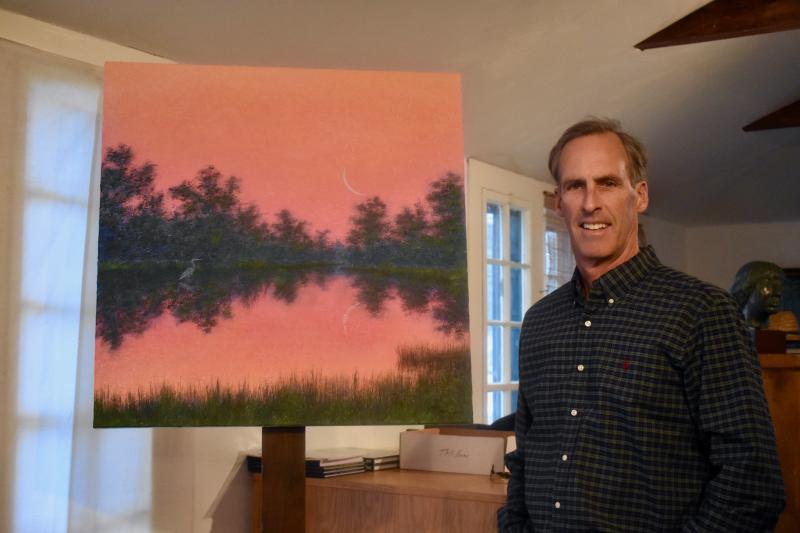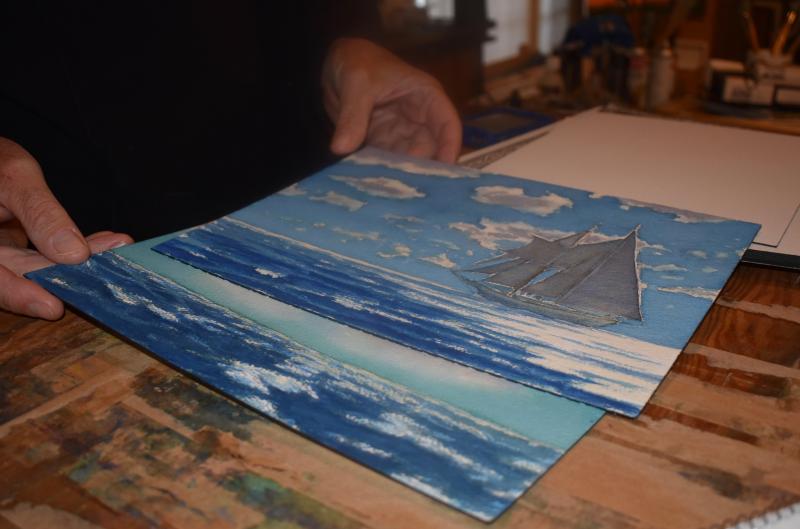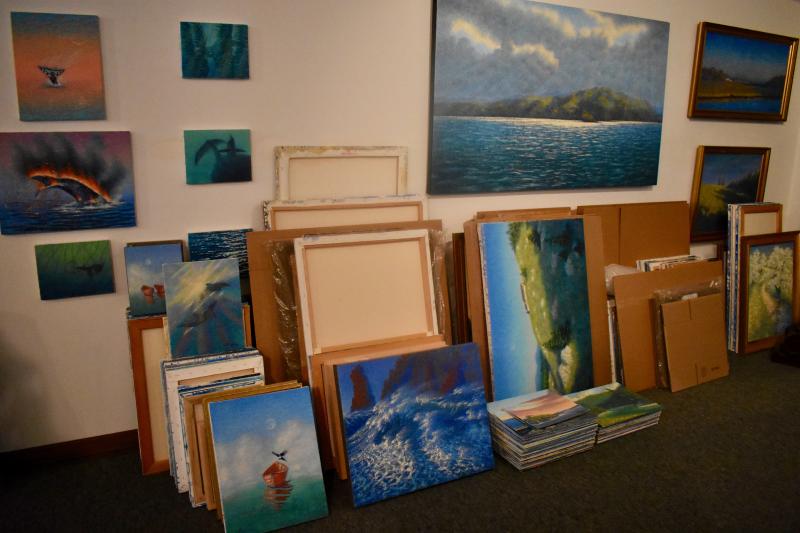Marion artist blends science, nature in unique artwork
At first glance, Peter Stone’s painting of a glacier looks like just that. With a closer look, the ship frozen into the ice becomes visible. If you take a step back, tilt your head and look one more time, you’ll notice the skull in the ice.
Stone, an artist based in Marion, uses this technique often. Many of his paintings are not what they seem. Whether it’s a face looking back from the trees or a road morphing into a snake’s head in the distance, his artwork often requires a second look.
An en plein air painter (painting outdoors), all of Stone’s work is inspired by places he’s been. The glacier painting comes from a recent sailing trip through Labrador, Canada.
“I used to start every painting on site,” he said. “I used to bring big canvases all the time. It got more difficult after [Sept. 11, 2001], so now I work from drawings in pen and ink, sketches and water coloring.”
If Stone is unable to bring one of his large canvases with him, he will make smaller versions to bring home to his studio on the Great Hill property, where he can bring the work to life through layering and glazing techniques.
Stone goes through a bit of a process to get his desired effect. First he paints the work, then he starts laying down pure color. Next, he varnishes it with pigment layers and finishes it with a glaze. All in all, it’s about nine layers.
“Glazing is something artists have always done,” Stone said. “Painting with layers to get optics is fairly common. More unusual is to start outside, and then add a glaze at the studio.”
The glazes Stone creates gather light, and almost give the paintings a glow.
“I wanted to do work that had a lot of visual power,” he said. “It’s all based on the science of light.”
In college, Stone was a double major of science and art, completing an undergraduate thesis in marine biology. While he never pursued a scientific career, Stone said he is still very much influenced by his studies at The Claremont Colleges.
“I enjoy looking at things through a scientific lens,” he said. “One of the focuses of my work is my education initiative, which is teaching art and science observational skills.”
In addition to working with schools, Stone has also published books that not only feature his paintings, but a scientific and sometimes mythological bend.
“I’m interested in explanations in phenomena, so I like to blend it all together,” Stone said of his scientific artwork. “Recently, I’ve been focusing a lot on lunar mythology.”
Aside from the oft-reoccurring moon in Stone’s painting, a quick glance around his studio makes obvious his love of the water.
“I think there certainly is a theme of water going through my work,” he said. “I’m a sailor, that’s how I’ve gotten to a lot of these places. It definitely frames my perspective.”
Stone will be participating in the Marion Art Center’s ArtWeek, where he’ll be teaching a workshop called “Art and Science Nature Journaling.” The class will be held on May 2 at 4 p.m., and will teach students in grades 5-8 how to explore symbols in nature through journaling.
For more information, visit www.marionartcenter.org/events/art-science-nature-journaling/.















